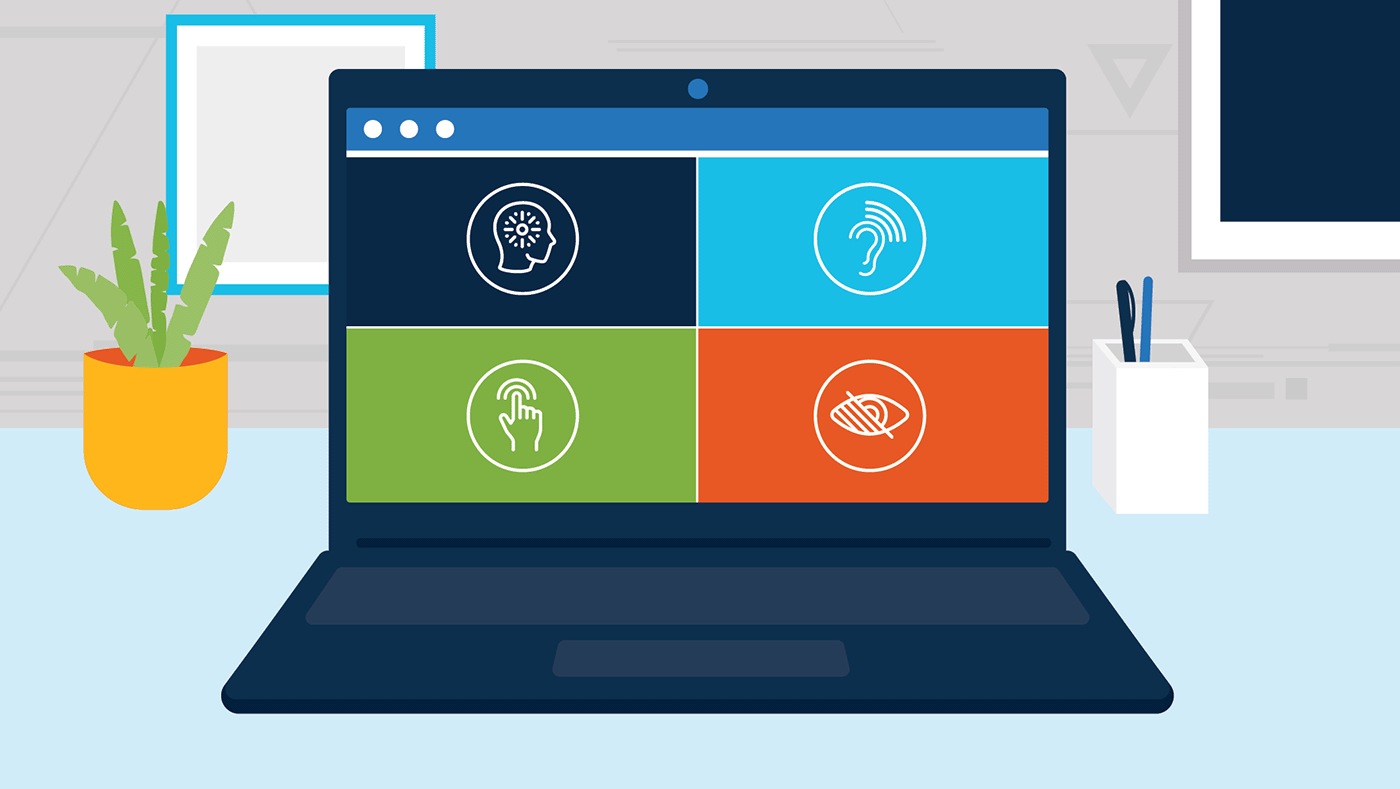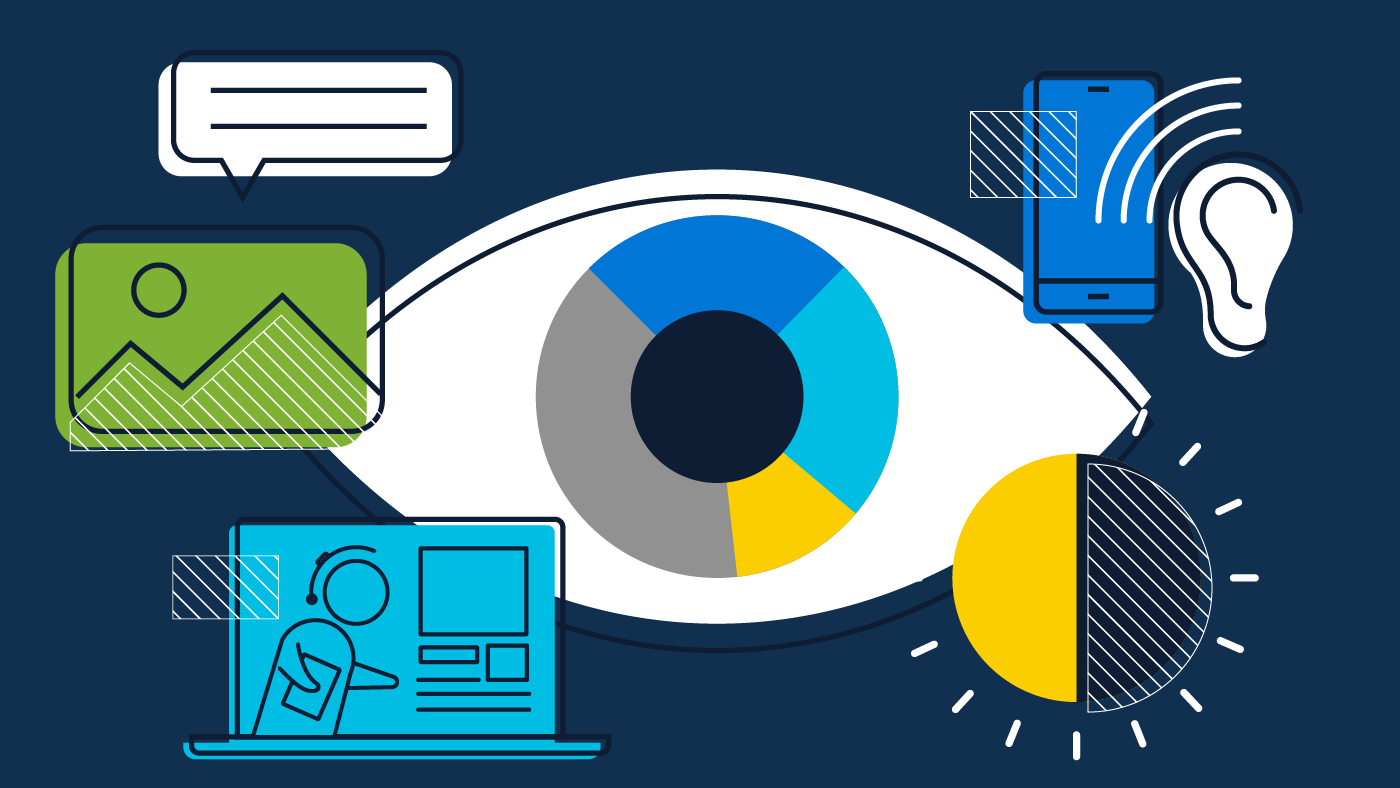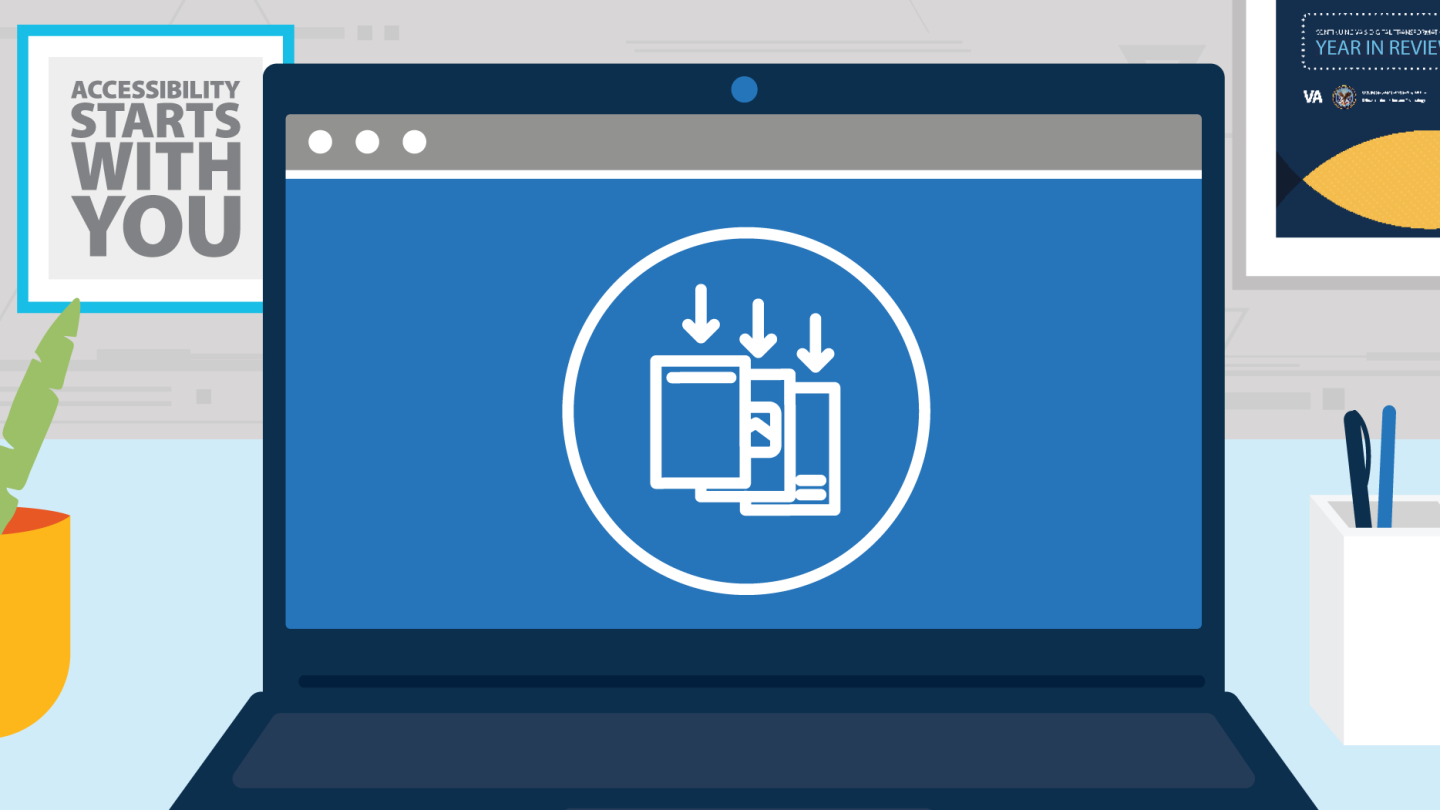Appears In
A slow internet connection — we all know the feeling. You click on a website link and wait. When the website content finally loads, perhaps the image doesn’t appear, so the rest of the information is out of context. For many of us, malfunctioning elements on a website are a part of modern life that is an annoyance at best and a moderate inconvenience at worst.
Now imagine being unable to interpret text or images on a webpage, or any other electronic platform, regardless of the internet connection speed. For many disabled people, this is their reality when interacting with websites and emails, as well as with file formats such as PowerPoint presentations or Word documents. According to the World Bank, fifteen percent of the world’s population experiences some form of disability, meaning they are impacted by a physical disability, such as blindness or a cognitive disability. In the U.S., the Veteran community is especially impacted by disabilities due to the extreme physical, mental, and emotional conditions in which they operate in service to their country. One source estimates that, in 2019 alone, approximately 4.5 million Veterans qualified as service disabled, meaning that either a preexisting disability was aggravated during active duty, or their disabled condition was caused while on active duty. This affects their ability to interpret content on a website, email, or other technology platform, in the same manner as would an individual without a physical or cognitive disability. The result is a knowledge gap imposed upon disabled individuals who are unable to access information in any electronic platform that is accessed exclusively through one sensory experience, such as using sight to communicate a message with color — for example, “click the red button.”
OIT’s Commitment to Accessibility
The Department of Veterans Affairs (VA) Office of Information and Technology (OIT) considers the integration of design accessibility into their electronic products as an integral part of our mission to serve Veterans; as of March 2022, of the 118,390 Veterans employed by VA, 54,388 are disabled Veterans. Section 508 of the Rehabilitation Act of 1973 is a law that requires all Federal agencies to ensure that any technological platforms used for official government purposes can be interpreted by anyone to the extent that it does not cause an “undue burden” for any specific group of people. OIT Accessibility goes a step further by educating the content creators — those individuals designing websites, sending emails, and creating PowerPoint presentations — about their role in integrating accessibility functions into their work products.
OIT is at the forefront of ensuring that the products we create are accessible, as this directly impacts the ability for Veterans to receive the care and benefits they have earned. Much like the larger technology industry, technological accessibility is a dynamic and constantly growing niche industry. Technological accessibility means designing content with a human-centered focus that considers the unique needs of everyone, including marginalized individuals who may lack the same faculties to access information compared to the population majority. Accessible design prioritizes inclusivity while simultaneously enabling information to be presented in an engaging and interactive method that adds value to the consumer, regardless of their sensory abilities. Martha Wilkes, Designer and Accessibility Strategist in OIT’s Office of the Chief Technology Officer (CTO), understands this all too well as part of OIT’s official mandate. She considers herself the accessibility advocate in the Office of the CTO. She believes that, when it comes to designing accessible content, “a big misconception is that accessible websites have to be ugly or can’t be visually appealing.” This misunderstanding leads many people to believe that designing for accessibility, especially regarding both internet and desktop-based products, is something that only needs to be considered in certain circumstances.
Designing Accessibly as an Act of Gratitude to Veterans
Ms. Wilkes and Pat Sheehan, Chief of VA’s Section 508 Program Office, are working together to change this mentality at VA. Mr. Sheehan works with VA employees and industry partners to guide them through the accessibility basics. “We understand that some individuals are just starting off and they don’t know everything,” he says. “That’s why we’re here to work with them [and] provide training for them.” Similarly, Ms. Wilkes considers her work to be an extension of the debt we owe to Veterans for their service to their country. “Many Veterans become disabled as a result of an injury during service,” she says. “Can you imagine the impact on your life, not only of having the trauma of that injury, and now your whole life is affected, and then, oh, by the way, this website that VA made for you is really hard for you to use? It adds a level of frustration, like adding insult to injury.” This begins with an awareness of the tools and resources that are available to convert various content elements into assets accessible through multiple senses, such as utilizing alt text to convert a picture from a visual to an auditory information source.
As a younger generation of Veterans come into prominence, having grown up interacting with technology, they are creating an advocacy platform for accessibility as part of their everyday electronic interactions. In response, OIT prioritizes accessibility design education above and beyond VA employees by extending practical guides, best practices, and other resources to industry partners, stakeholders, and the public. This is generating momentum for solutions that go beyond merely meeting the technical standards required by law to an approach based on human centered design. Ultimately, Ms. Wilkes reminds us that accessibility applies to everyone. We are all “temporarily abled,” she points out. “At some point in our lives, we will either be disabled ourselves or have disabled people very close to us in our lives.” From Veterans and their loved ones to VA employees and industry stakeholders, accessibility matters to all of us and starts with each one of us.
Accessibility at VA starts with you. To learn more about accessibility, explore OIT’s Accessibility Guide and watch OIT’s Accessibility video.
Our commitment to digital and IT transformation is shaped by our daily dedication to customer service and the close collaboration of our workforce, managers, and leaders. Ready to join us in improving Veterans’ care? Check out all current information and technology career opportunities on DigitalVA. You can also contact VA’s Office of the Chief Human Capital Officer at 512-326-6600, Monday thru Friday, 7 a.m. to 5 p.m. CST or by submitting a resume to VACareers@va.gov.
Topics in this story
In this article
More stories
Link Disclaimer
This page includes links to other websites outside our control and jurisdiction. VA is not responsible for the privacy practices or the content of non-VA Web sites. We encourage you to review the privacy policy or terms and conditions of those sites to fully understand what information is collected and how it is used.






